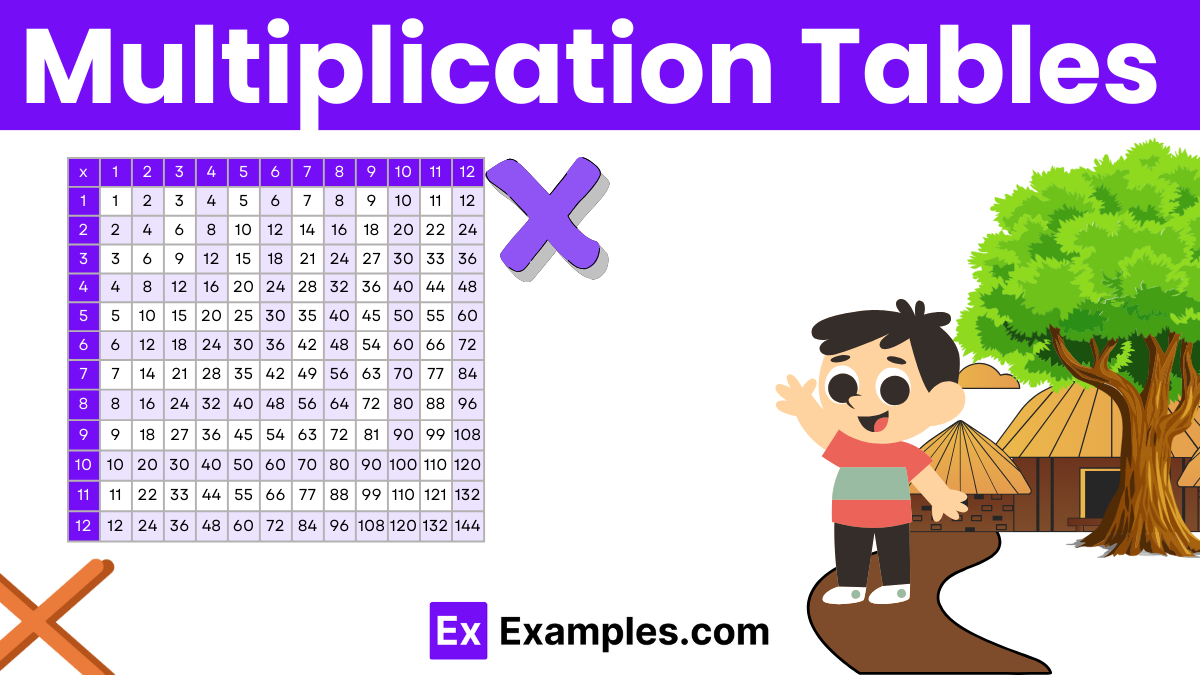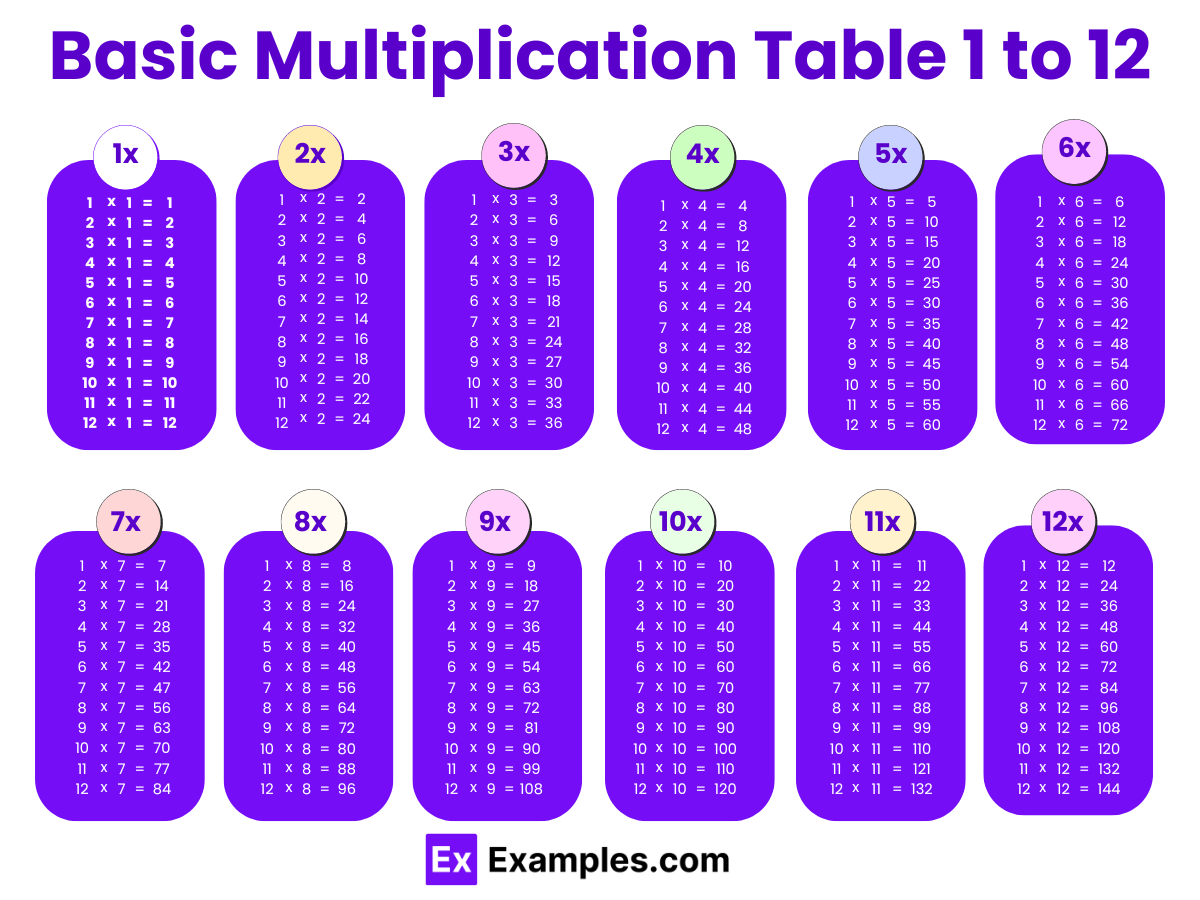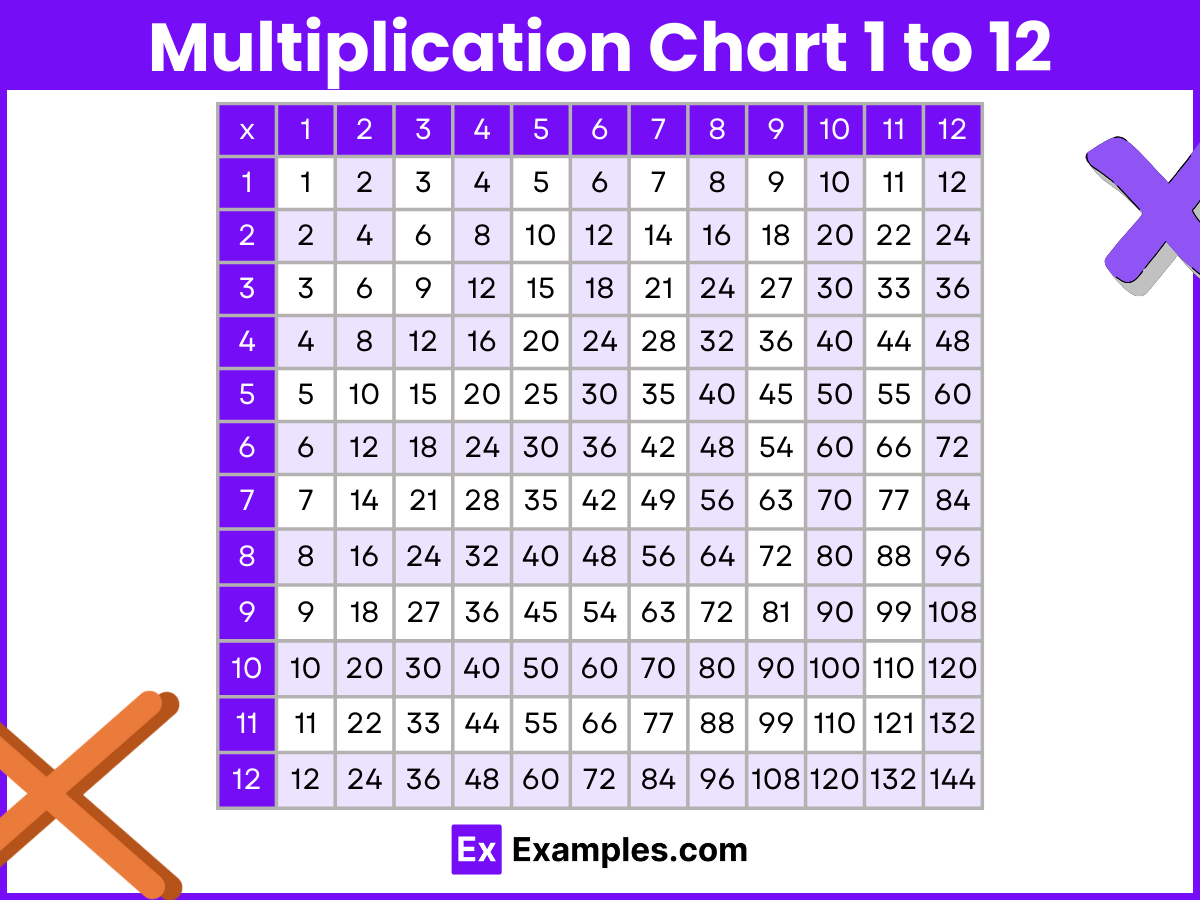What is 8 × 7?
56
57
58
59


Multiplication tables, often referred to as “times tables,” are a fundamental component of elementary mathematics education. They provide a quick and efficient way for students to learn and perform multiplication operations, which are crucial for higher mathematical concepts and everyday calculations. Mastering multiplication tables helps build a solid foundation in arithmetic, paving the way for more advanced topics like division, fractions, and algebra.
A multiplication chart is a visual tool used in mathematics education to help students understand and memorize the relationships between numbers through multiplication. It typically displays a grid or table containing rows and columns of numbers where the intersection of each row and column represents the product of the two numbers.
The basic multiplication table from 1 to 12 is a comprehensive grid that helps students quickly reference and memorize multiplication facts. It extends beyond the typical 1 to 10 range, including products up to 144, which is crucial for developing more advanced mathematical skills. This extended table is an invaluable resource for young learners, enhancing their speed and accuracy in mathematical calculations.

A times table chart for numbers 1 to 12 is a grid-like tool that assists in quickly viewing and learning multiplication facts. At the top of the chart, you will find the numbers 1 through 12 listed sequentially. These numbers also appear sequentially down the left-most column of the chart. Each cell within the grid then represents the product of the corresponding number from the top row and the left column.

During examinations, having quick recall of multiplication facts can save precious time. This allows students to allocate more time to solving complex problems, thus improving their overall performance.
Multiplication tables are a crucial component of foundational mathematics education, offering numerous benefits that extend beyond simple arithmetic. Their mastery is essential for students, as it forms the groundwork for more advanced mathematical concepts and practical problem-solving skills in daily life. Here are some key reasons why learning multiplication tables is so important for students:
Learning math tables, also known as multiplication tables, is essential for students as they form the foundation for more complex arithmetic operations. Here are some effective and engaging methods to help students of all ages easily master these crucial mathematical elements:
To memorize multiplication tables from 1 to 20, practice regularly in segments, use flashcards for self-testing, and apply rhymes or songs to reinforce retention. Group similar tables for pattern recognition and consistent repetition.
Yes, memorizing multiplication tables is essential. It enhances mathematical fluency, speeds up calculations, boosts confidence, and lays a strong foundation for advanced mathematical concepts and problem-solving skills.
Learning multiplication tables easily can be achieved by using visual aids like charts, incorporating educational games, and practicing with flashcards. Regular, short practice sessions and real-world application also greatly aid memorization.
The hardest multiplication tables to memorize are often those that deal with larger numbers, typically from 13 to 19, due to their less frequent use in everyday calculations and their absence from early educational curricula.
To memorize tables up to 100, focus on mastering smaller segments first, use cumulative repetition, and apply mnemonic devices. Also, practice regularly using various methods like quizzes, apps, or teaching the concepts to someone else.
A useful trick for the 12 times tables is to double the number being multiplied by 12 and then add the original number to the doubled amount. For example, for 12 x 3, double 3 (which is 6) and add 3 to get 36
Text prompt
Add Tone
10 Examples of Public speaking
20 Examples of Gas lighting
What is 8 × 7?
56
57
58
59
What is the result of 9 × 6?
45
54
63
72
Which of the following is the result of 7×9?
63
64
65
66
hat is the product of 10×11?
100
110
120
130
Find the result of 15 × 4.
50
55
60
65
What is 14 × 3?
42
44
46
48
What is the result of 13 × 7?
72
81
91
102
What is 16 × 5?
75
80
85
90
Calculate 18 × 4.
72
75
79
86
What is 20 × 6?
110
120
130
140
Before you leave, take our quick quiz to enhance your learning!

